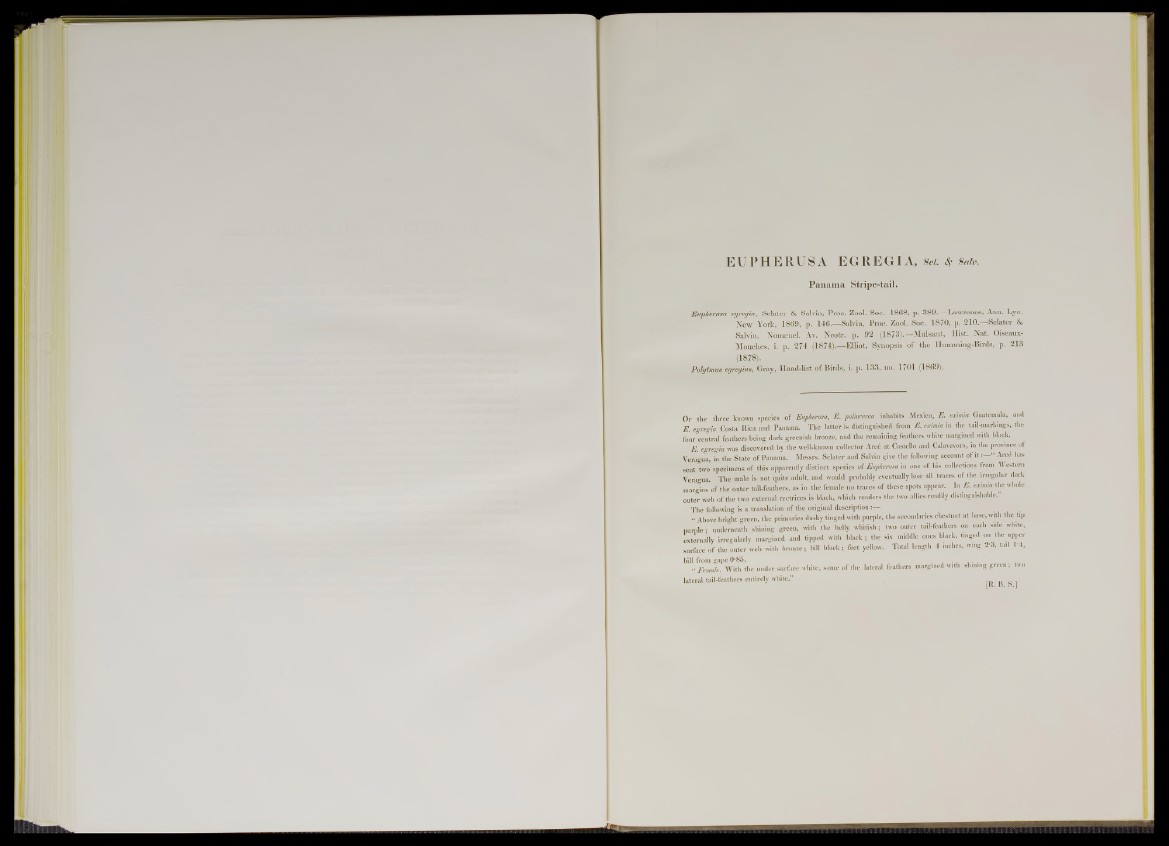
EUPHERUSA EGREGIA, Sci. * s aiv.
Panama Stripe-tail.
Eupherum egregia, Sclater & Salvia, Proc. Zool. Soc. 1 8 6 8 , p. 3 8 9 .— Lawrence, Ann. L y c .
N ew York, 1 8 6 9 , p. 1 4 6 .— Salvia, Proc. Zool. Soe. 1 8 7 0 , p. 2 1 0 .— Sclater &
Salvia, Nom en c l. Av. Neotr. p. 9 2 (1 8 7 3 ).—Mulsan t, H ist. N a t. Oiseaux-
Mouclies, i. p. 2 7 4 (1 8 7 1 ).— Klliot, Synopsis o f the Humming-Birds, p. 2 1 3
(1878).
Polytmu8 egregius, Gray, Hand-list o f B irds, i. p. 1 3 3 , no. 1 /0 1 (1869).
Of the three known species o f Eupherasa, E. poliocerca inhabits Mexico, E. emmia Guatemala, and
E . egregia Costa Rica and Panama. The latter is distinguished from E. emmia in the tuil-markings, the
four central feathers being dark greenish bronze, and the remaining feathers white margined with black.
E . egregia was discovered by the well-known collector Arce at Castello and Calovevora, in the province of
Veragua, hi the State o f Panama, Messrs. Sclater and Salvin give the following occountof it ty -“ Arce has
sent two specimens of this apparently distinct species of Eupherma in one of his collections from Western
Veragua. The male is not quite adult, and would probably eventually lose all traces of the irregular dark
margins of the outer tail-feathers, as in the female no traces of these spots appear. In E . emmia the whole
outer web o f the two external rectrices is black, which renders the two allies readily distinguishable.
The following is a translation of the original description:—
“ Above bright green, the primaries dusky tinged with pnrple, the secondaries chestnut at base, with the tip
purple 1 underneath shining green, with the belly whitish; two outer tail-feathers on each side white,
externally irregularly margined and tipped with black; the six middle ones black, tinged on the upper
surface of the outer web with bronze; hill black; feet yellow. Total length 4 inches, wing 2-3, tad 1-4,
bill from gape 0 ’85. #
"Female. With the under surface white, some o f the lateral feathers margined with shining green; two
lateral tail-feathers entirely white.” [H B S ]